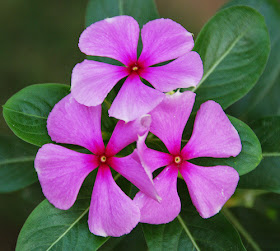Periwinkle Tea Benefits have been noted by many traditional herbal medicine practitioners in various parts of the world.
Periwinkle is known to possess analgesic, antibiotic, antibacterial, laxative and hypotensive properties, among others.
The periwinkle is an evergreen shrub that typically grows in Europe, northwestern Africa, central Asia, and some parts of North America.
It has many branches that can reach up to 2½ feet in height when fully mature.
The periwinkle has oval shaped leaves that have glossy surfaces.
The periwinkle flowers have five-lobed petals and are white to pinkish in color.
The plant also has cylindrical-shaped seedpods.
The periwinkle is believed to have originated in Madagascar and has been used as a folk medicine in many parts of the world.
The periwinkle tea was used as a folk remedy for diabetes in Europe while it was used as a cough medicine in China.
In Hawaii meanwhile, the periwinkle poultice was used as a bandage to stop bleeding while in the Caribbean, they were used to treat infections and as a protection against voodoo magic.
The active constituents of periwinkle are the following: vincamine, vinpocetine, vinblastine, vincristine, alstonine, ajmalicine, leurocristine, and reserpine.
To make periwinkle tea, pour a cup of boiling water onto 1 teaspoonful of the dried whole periwinkle plant, and let the mix infuse for 10 to 15 minutes.
The periwinkle tea should be drunk three times a day.
The following are the health benefits attributed to periwinkle tea:
Periwinkle tea may be helpful in the treatment of memory loss problems.Periwinkle tea may have anti-cancer properties.
Periwinkle tea may have some blood sugar lowering properties.
Periwinkle tea may help improve blood circulation.
Periwinkle tea may help treat mouth sores.
Periwinkle tea may be helpful in the treatment of headaches.
Periwinkle tea may be helpful as part of the treatment of diarrhea.



.jpg)



.jpg)






















.jpg)






